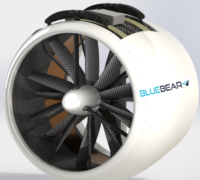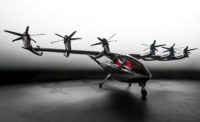CAMBRIDGE, England—Start-up electric aircraft manufacturers, such as Bye Aerospace and Pipistrel, have carved out a niche market for two- and four-seat planes, attracting the attention of traditional companies, such as Cessna and Piper, claims a new report from IDTechEx. According to "Manned Electric Aircraft: Smart City and Regional 2021-2041,” the next focus will be on two-propeller fixed-wing aircraft that seat up to 10 passengers.
However, many challenges face aerospace engineers, such as balancing aerodynamics and weight. For instance, larger battery-powered aircraft are usually required to go faster, but 50 percent faster means three times the battery power. With a conventional airframe, lithium-ion batteries are one-third of the weight.
In addition, a regional aircraft can have 500 kilometers of cabling. But, in cars, at least 50 percent of cable weight is eliminated by higher voltage, improved geometry and board-to-board wireless connection. In-mold electronics, structural batteries and large aluminum die-castings can also eliminate hundreds of parts.









